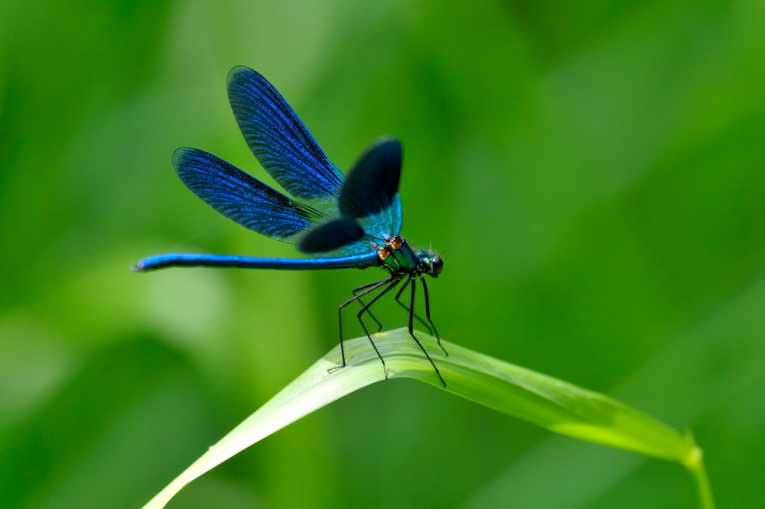Delicate fluttering wings, fascinating hovering motions, dainty, beautiful yet extremely precious in indicating the health of ecosystems, and overall environmental quality, dragonflies are one of nature's many precious species giving us a physical sense of our damage or care.
Not only are they precious today, but they are prehistoric, dating back to 300 million years ago, once giant insects with wingspans of up to 65 cm, which makes them extremely magnificent and fascinating.
Scientists have theorised on the prehistoric oxygen level conditions, existing at the time, at almost 50% more than O2 levels today, which were ideal for the ancient dragonfly and may have promoted their larger growth. Whilst humans have a single tracheal system inhaling O2, insects have a multiple tracheal tube system. Other theories on their physiological size reduction include predation by prehistoric birds.

Meganeuridae; Credit: © Hcrepin
Such ancient creatures deserve more respect than we give them by destroying their habitats. Not only are they are a indicator for healthy biophysical environmental conditions but lead to an indication of other species in an aquatic environment and the general biodiversity. Spending most of their lives underwater in rivers, streams, ponds, lakes, their presence in aquatic environments do signify water quality due to dragonflies and damselflies requiring clean water to thrive.
Their survival also requires healthy indigenous vegetation to provide oxygen and clean the water but also helping them to hide and for their transformation process from nymphs to adult fliers. If dragonflies are absent from or near a water body, the potential issues may be pesticides and excessive nutrients from agricultural landscapes, siltation from soil and bank erosion, various water contaminants from human settlement and industry or urban landscapes.
According to the EU Red Data List, with about 5,680 species, the dragonflies constitute a relatively small insects order and most species are found in the tropics. Their sensitivity to habitat quality and their amphibious life cycle make dragonflies well suited for evaluating environmental changes.
Dragonflies are also beneficial to potential human health risks by consuming mosquitoes and their larvae; they also eat a range of other insect life at various metamorphic phases. Damselflies are their close relatives but differ in that the dragonfly's forewings differ from their hind ones and both sets remain open at rest unlike the damselfly. The larval stage of the dragonfly is spent underwater and creating a risk from predators such as frogs, fish, newts and other invertebrates.
From ancient giant form to present day fairy like physiques, these creatures play such an enormous role in the environment and are our flying 'green' flags of good environmental quality.
href="https://earthtimes.org/index.html">Nature News









